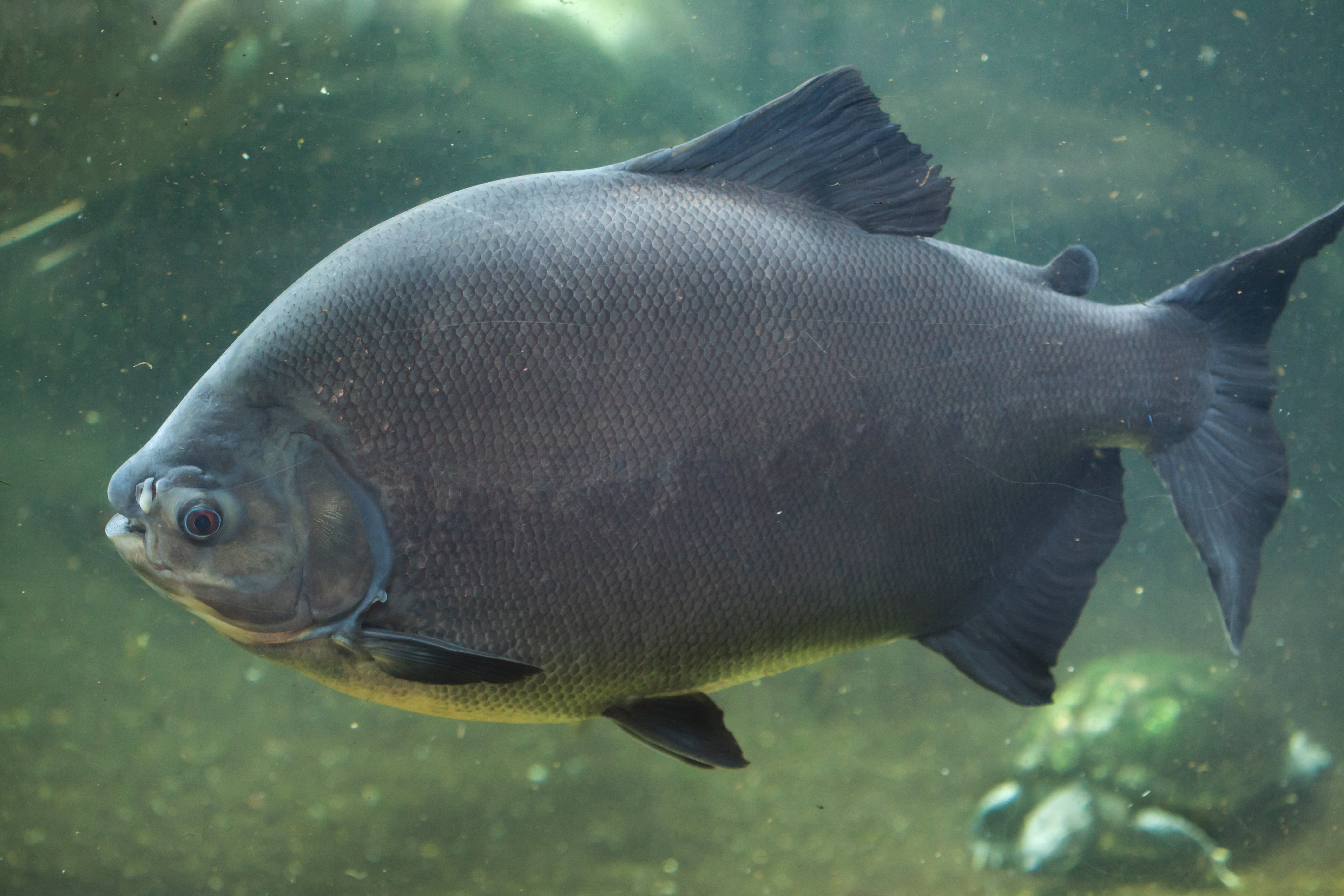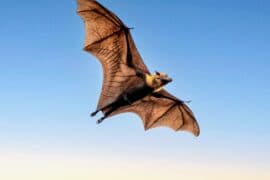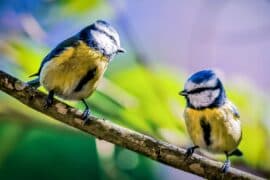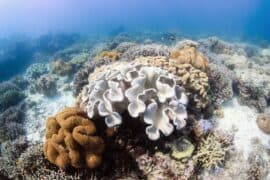Colossoma macropomum
(Colossoma macropomum)

Description
Black pacu is a common name for several fishes and may refer to Colossoma macropomum, Myleus schomburgkii and Piaractus brachypomus. Pacu is a common name used to refer to several species of omnivorous South American freshwater serrasalmid fish that are related to the piranha. Pacu and piranha do not have similar teeth, the main difference being jaw alignment; piranha have pointed, razor-sharp teeth in a pronounced underbite, whereas pacu have squarer, straighter teeth and a less severe underbite, or a slight overbite. Pacu, unlike piranha, mainly feed on plant material and not flesh or scales. Additionally, the pacu can reach much larger sizes than piranha, at up to 1.08 m (3 ft 6+1⁄2 in) in total length and 40 kg (88 lb) in weight. Pacu, along with their piranha relatives, are a characin fish, meaning a kind of tetra, belonging to the Characiformes order. The ongoing classification of these fish is difficult and often contentious, with ichthyologists basing ranks according to characteristics that may overlap irregularly. DNA research sometimes confounds rather than clarifies species ranking. Ultimately, classifications can be rather arbitrary. Pacu, along with piranha, are currently further classified into the family Serrasalmidae (formerly a subfamily of Characidae). Serrasalmidae means "serrated salmon family" and refers to the serrated keel running along the belly of these fish. However, dental characteristics and feeding habits further separate the two groups from each other. Pacus are native to tropical and subtropical South America. They inhabit rivers, lakes, floodplains and flooded forests in the Amazon, Orinoco, São Francisco River and Río de la Plata Basins, as well as rivers in the Guianas. Here they form part of the highly diverse Neotropical fish fauna. Their habitat preferences varies significantly depending on the exact species. Several species are migratory. Pacus have been introduced to the wild in many places outside their native range, both in South America and other continents. They are sometimes released to increase the local fishing, but others are released by aquarists when they outgrow their aquarium. This is illegal in many countries and strongly advised against. When becoming established they can be invasive species that damage the local ecosystem.
Taxonomic tree:







